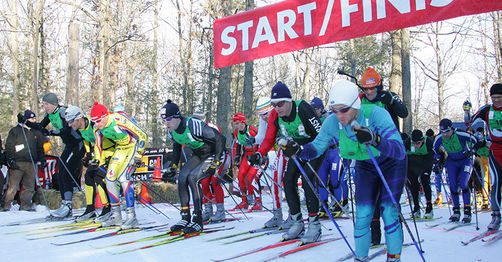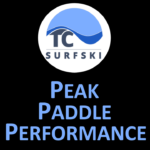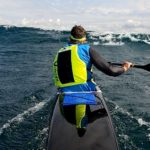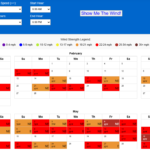A Tough Race and Some Interesting Observations
I’ve been doing a lot of blogging recently about my diet and training methods and I can imagine many of you are curious to see and hear about the actual results.
The Original Problem: Lack of Endurance
This past weekend I had a chance to race for the first time since the Ride the Wave Regatta in Michigan City, in early September. As many of you know, that race did not end well for me, as I hit the wall around mile 16 and bonked pretty hard. It took several hours before I was able to recover and I could hardly stand up without being nauseous. Needless to say, I was not having any fun at a time when I was supposed to be celebrating the end of the race season and presenting the awards for the Great Lakes Race Series.
New Approach to Diet and Training
In October I decided to make a drastic shift in my diet and go from vegan (for the past five years) to low carbohydrate / ketosis. As I outlined in previous blogs, this decision was based on reading several different books as well as an inherit desire to shake things up a bit. At about the same time I started reading some different books on training methods and decided to experiment in that arena as well. The diet and training changes were both made in an effort to drive physiological changes that would significantly improve my endurance. There seemed to be a lot of evidence that both diet and training could work in synergy to shift my metabolism from being mostly dependent on glucose to being highly efficient at burning fats and therefore improving endurance.
It took about six to eight weeks of following a low carbohydrate diet before I feel my metabolism fully shifted. For three months (Nov, Dec, Jan) I followed a very strict heart rate based training approach where I worked to stay right at my aerobic threshold of 140. In all of these workouts I also focused on breathing exclusively through my nose, keeping my mouth sealed shut at all times.
Measurable Results in Aerobic Efficiency
In both paddling (on the ERG) and cross country skiing, I have made measurable gains in efficiency at my aerobic threshold and am quite confident at that threshold I am probably getting 75% or more of my energy from fat.
On the ERG I performed measured 20 minutes tests (following a warm-up) and was able to go from averaging a 500 meter pace of 2:28 down to 2:24 at an HR max of 140. I was not able to do as specific a measurement for skiing as conditions always vary, but I could feel that over the course of two months my pace definitely increased at the same HR level.
First Race in 5 Months
I would be lying if I said I wasn’t nervous going into the Vasa 50k skate ski race this weekend. For three straight months I did not see an HR over 143. Overall I was feeling very healthy, thoroughly enjoying the workouts, with no nagging injuries or colds at all, but I had no idea what would happen once the gun went off.
I started the race toward the back of the elite pack in order to try and start easy and not get caught up in the frantic madness of the front groups. It was bitterly cold (right at zero or a couple digits below) at the start and it was indeed frantic. There was a crash on the first lap which I luckily avoided and then about 3k into the race a scuffle that looked pretty intense (first time I’ve seen that cross country ski racing). I managed to avoid it all and settle into a nice pace for just a little while. Then the hills came! My skis had absolutely no glide when climbing and it quickly took a toll on me. I felt like I was walking up the hills and couldn’t find any drive to go up them any faster. Interestingly my HR was not actually that high. About half way through the first loop I started having serious thoughts of dropping out as I thought about the prospect of doing the 25k loop a second time. You can see this period of the race in my Garmin results where my average HR dropped significantly down into the 130s. I was in a real funk and just couldn’t seem to snap out of it. I have never quit a race and fortunately I continued on and the second lap got much better and more enjoyable. By this time I was on my own and just set my own easy/survival pace. My legs were completely spent from the climbing but overall I felt really good at the finish and felt like I had the energy to ski another 20k on the flats even though I hadn’t taken on any fuel or hydration during the 3 plus hours of racing. (benefits of burning fat)
Breathing
Another dimension that came into play in the race was breathing. As mentioned before, for the past 3 months I have done exclusively nasal breathing in all my workouts. I knew this wouldn’t be feasible while racing and never planned to do it, but I think somehow this also threw my body off balance and possibly chilled me more than I was accustomed to. In my experience in very cold conditions it is extremely hard to breath nasally for the first 20 minutes or so, but once I cross the 20 minute threshold and my body is warm, it becomes totally effortless. I can even continue nasal breathing up to an HR around 150. This is actually much higher than I saw for most of the race, but having not “adapted” to it at the start, I couldn’t seem to hold the nasal breathing for any length of time in the race.
All said and done the race took me 3:15 (much slower than the 2:50 I was targeting) at an average HR of 140. Coincidentally, or not so coincidentally, this was exactly the threshold I trained at for the past three months. Ideally, I feel that I should be able to average an HR closer to 150 in a marathon race.
I know that many of you are probably not the least bit surprised by the results of my first race on the new regiment (and I can’t say I wasn’t warned ). Cross country ski racing requires the ability to go anaerobic for periods of time and then recover quickly and be ready to do it again (chasing down the pack in front of you or climbing hills). Having not done any speed work this year, I simply had no top end. I do think the extremely cold conditions could have also played a role in this, but likely not as much as my training.
Maximizing Strengths
Following the race I had a chance to catch up with fellow surfski paddler Denny Paull. Denny shared some great tips on V1 technique from Andy Liebner (Olympic team coach for Peru and my former neighbor in Alaska). I’ve termed this technique the “Paddler V1” because it essentially involves leveraging your core strength to crunch your way up the hills and take the workload off of the legs. It obviously worked very well for Denny because he had an amazing race and said that he was looking forward to the hills as an opportunity to gain ground on those ahead of him. For those of us who paddle all summer and have extremely strong core and arms, this technique probably makes a lot of sense. Like everything else, it is all individual and ultimately a matter of capitalizing on your natural strengths and what works for you!
Conclusions:
- I am still a firm believer that it is worth testing out a low carbohydrate diet and focusing on aerobic training and this can be beneficial to many people who have been chronically over training and/or may have a low tolerance for carbohydrates
- I am very pleased with the improvements I’ve made in overall endurance and am quite confident my body has become highly efficient at burning fat
- I absolutely plan to practice the “Paddler V1” and incorporate that into my arsenal of ski techniques
- I will continue with low carbohydrate eating and lots of aerobic training, but will also start to incorporate some higher intensity efforts while listening very closely to my body for any signs of overall health deterioration and will not sacrifice fitness for health
- I do believe low carbohydrate diets and pure aerobic training can be very beneficial for very long endurance events such as Ironman races and ultra-marathons
- If you are racing regularly, you may not ever need to add anaerobic training as your racing will provide all the anaerobic work you need.
- If you are just looking for the best overall health, wellness, and weight control then I would absolutely recommend a low carbohydrate diet and purely aerobic training.




